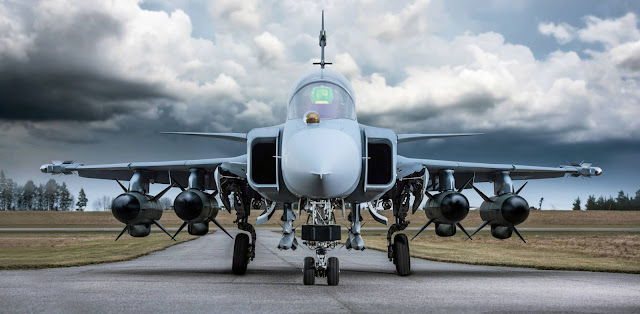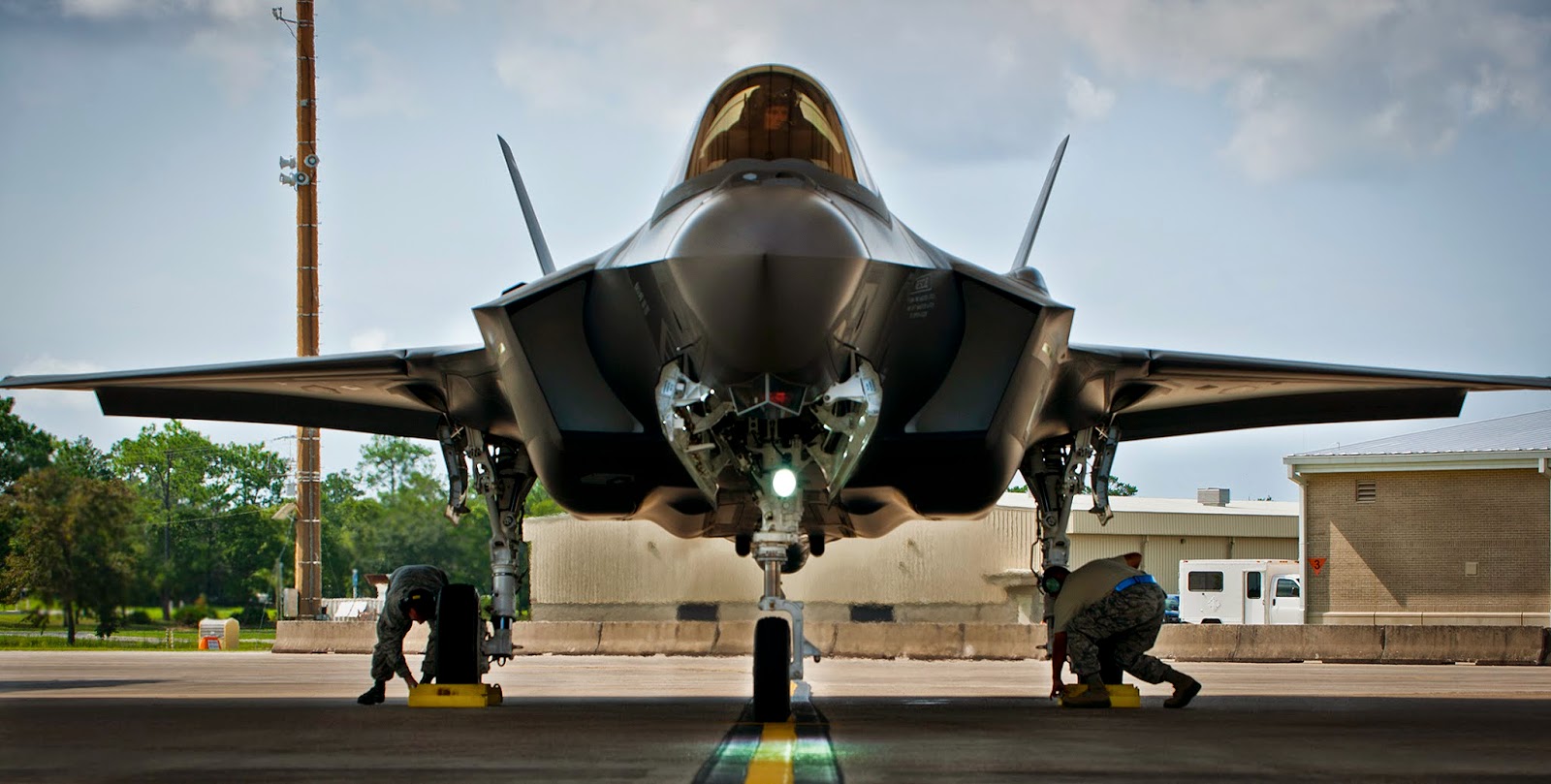Textron's Scorpion: Future trend or dead end?
 |
| Textron Scorpion |
It's a two-seat, twin turbofan design meant to be used as a light strike aircraft, ISR (Intelligence, Surveillance, Reconnaissance) platform, or a trainer. Wing pylons are capable of mounting external fuel, weapons, or sensors. A modular design allows easy customization for potential customers.
 |
| The Scorpion's stingers. |
While it certainly appears sleek, with a tail quite reminiscent of the F-14 Tomcat, the Scorpion is certainly no dogfighter. It's incapable of supersonic flight and those long, straight wings are designed with loiter time in mind, not high speed performance. Still, the promise of an affordable ($3,000 per flight hour) light attack and ISR platform seems to have a lot of potential in the days of military budget cutbacks and uber-expensive stealth fighters.
But is there a market?
 |
| Douglas A-4 Skyhawk |
The concept is certainly not new. Back in the 50s, the USN desired a small, lightweight attack aircraft to replace the prop-driven A-1 Skyraider. The Douglas Aircraft Company, (which would later merge to become McDonnell Douglas, and then become part of Boeing) came up with a diminutive little aircraft, the A-4 Skyhawk. The Skyhawk was so small that it didn't need folding wings in order to be stored on an aircraft carrier.
Able to take off and land on smaller WWII era carriers, the A-4 was welcomed into the USMC as well as many other countries desiring a small attack aircraft. Seeing widespread use in Vietnam, the Skyhawk proved popular with pilots, earning the nickname "Scooter", it was often praised for its agility and toughness. It was also quite easy to maintain and quite affordable to fly. About 3,000 copies of the A-4 were produced, with many still in use almost 50 years after its introduction.
There has been no real successor to the A-4 however. Replaced by the much more expensive F/A-18 Hornet and the AV-8 Harrier in the USN and USMC, the A-4 may have well been the last of a breed of small, easy to maintain jets flying in western air forces.
 |
| Boeing Skyfox prototype. |
There have been other attempts, however. In the 80s, Boeing attempted a small, lightweight attack/trainer aircraft based heavily off of the Lockheed T-33 Shooting Star. Replacing the T-33's single turbojet with two more efficient turbofans, the Skyfox was faster and could fly much further.
Despite its low cost, and the possibility of upgrading existing T-33 airframes (which numbered in the thousands), there was little interest in the Boeing Skyfox.
 |
| Northop F-20 Tigershark |
Unfortunately, the F-20 never saw a single sale. President Reagan's lifting of sales restrictions on the F-16 Fighting Falcon proved to be the Tigershark's downfall. The USAF, knowing that every F-16 sold to a a foreign country meant cheaper F-16s for them, actively pushed for more foreign F-16 sales. With it's potential market swallowed by the F-16, the F-20 was cancelled. To this day, the F-20 is often mentioned as the "best fighter that was never built". It's similarities to the Saab Gripen however, cannot be ignored.
 |
| Scaled Composites ARES |
Rutan's fabled use of high-tech composites made for a very light aircraft, and the ARES boasted rather impressive handling and endurance, capable of turning at 7G (the same as a F-35C!) with a range of 2200km (same as an F-35A). With it's 25mm rotary cannon, the ARES would have been utilized in much the same way as an A-10, albeit less deadly but at a lower cost.
Despite the ARES' low cost and impressive performance, the US military was not interested. No further development and no sales resulted.
 |
| Are budget-busting aircraft like the F-35 and F-22 the only viable option? |
Is there still a market for cheap, lightweight, and easy to maintain combat aircraft? Recent procurement trends would suggest otherwise, as low cost concepts like the Skyfox, F-20, and ARES are all passed over, while budget busting aircraft like the F-22, F-35, and B-2 are pressed into service.
Some are suggesting that it is time to revisit the concept of cheaper, less "capable" aircraft. With defense budgets imploding on an international basis, maybe these people are on to something.
P.S.
You're welcome.



Textron made us an interesting surprise indeed. In my opinion, it was difficult to push for low-cost solution during the cold war era. That could be different now. But in the USA point of view, technological pressure is used as a weapon : they used it successfully against soviet union, which was not rich enough to follow them. I cannot say if a U-turn is possible in this regard. The "All stealth" strategy we see today is significant of this strategy.
ReplyDeleteAbout the Scorpion concept, there are still some doubts. For the three missions, competition exists : for ISR, all major armies are working on UAV capabilities. In addition, some non-dedicated platforms, such as modified light aircrafts with optical sensors are ready and cheaper. For training, armies have already a good choice of advanced trainer aircrafts such as Hawk, T-50 or M-346 (and even Gripen?) not necessarily more expensive. As a light attack aircraft, Textron could need to demonstrate the added value against the Embraer Super Tucano, or other light aircraft, which has very likely inferior speed and range but is probably cheaper...
The Close Air Support role, which was the A-10 realm, is another topic. A dedicated aircraft is expensive and the end of a "massive tank assault"-type of war drives new requirements... Will it be a compromise between armed UAV for time-sensitive targets and modern fighter with improved datalinks to escort ground missions?
Would the Textron Scorpion have the capabilities Canada needs? I read an article saying it doesn't have air-to-air radar, air-to-air missiles or a fixed gun.
ReplyDeletehttp://www.janes.com/article/38396/textron-to-offer-scorpion-jet-to-swiss-air-force
I'd be interesting in seeing how the FA-50 compares against the current fighter possibilities, or if it's even possible for the Scorpion to meets Canada's needs.
The Scorpion would be a poor choice for a CF-18 replacement.
ReplyDeleteIt would, however, make a good Tutor and/or Hawk replacement for use as a trainer and for the Snowbirds. It would probably make a decent close-air-support asset as well.
I found a July 16th Scorpion article in 'Aviation Week' interesting. The plane is
ReplyDeletebeing sold on some compelling case scenarios. For example in the Afghanistan
theatre month after month gas guzzling expensive fighters were/are flying
uneventful missions.."you're chewing up lifetime on high end assets".
On past deployments of CF!88 overseas, Canada has
spent a lot on just these kinds of missions. If we were to buy the fancy pants
Lockmarts, we could reduce the quantity of them by ordering a few squadrons of
the Scorpions-for this kind of duty at least. The Scorpions could identify and
locate the threats, then send in the '35s or even better drones where
needed.
The concept of having to replace the paint
peeling off the '35s and other wear parts, just because they got bagged out
flying ho hum missions is just so asinine. I bet the Talibanis are laughing
their faces off every time they bushwack an aviation fuel convoy going through
Waziristan or Whateverstan.
http://aviationweek.com/farnborough-2014/scorpion-aimed-unique-air-combat-niche